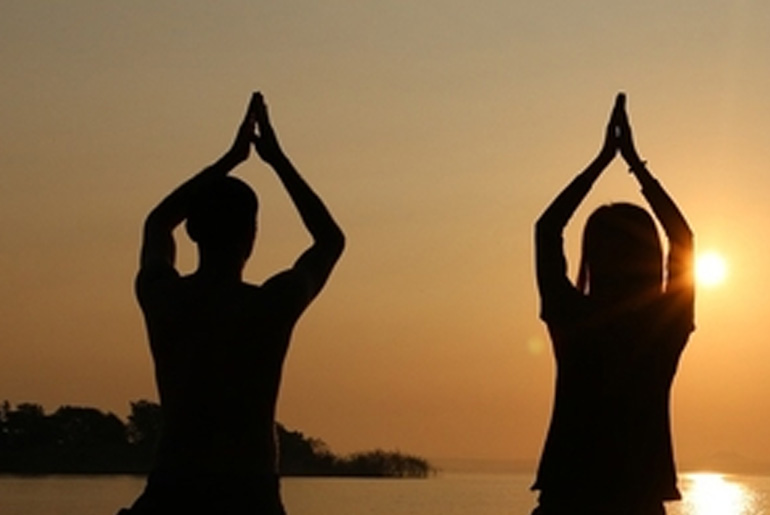Anxiety is a natural emotional response to stress, but when it becomes chronic, it can disrupt daily life and impact both mental and physical well-being. Experts suggest that yoga can be highly effective in managing anxiety by calming the mind, lowering stress hormone levels, and promoting overall relaxation. Through mindful movement, breath control, and meditation, yoga offers a holistic approach to easing anxiety and enhancing emotional resilience.
In today’s modern world, restlessness often arises from digital overload, social and work-related pressures, inadequate sleep, sedentary habits, processed food consumption, and unexpressed emotions. These factors collectively strain both the mind and body. However, practicing simple yoga asanas can offer an effective remedy by calming the mind, releasing built-up tension, and restoring a sense of balance and inner peace.
1. Balasana (Extended Child’s Pose)
Benefit: Induces calm through regulated breathing; a restorative resting pose.
Formation:
- Kneel on the mat, sit on heels.
- Inhale: Raise arms above the head.
- Exhale: Lower torso and place forehead on the floor.
- Let the pelvis rest on the heels.
- Keep the back straight, not hunched.
2. Adho Mukha Svanasana (Downward-Facing Dog Pose)
Benefit: Helps reduce anxiety and depression.
Formation:
- Start in Padahastasana.
- Move feet back, lift hips up to form an inverted ‘V’.
- Keep head between arms, elbows straight.
- Try pushing heels toward the floor.
- Gaze at big toes.
- Exhale into the pose, inhale while releasing.
3. Paschimottanasana (Seated Forward Bend)
Benefit: Acts as a stress reliever.
Formation:
- Begin in Dandasana (seated, legs extended forward).
- Stretch arms upward, keep spine erect.
- Exhale: Bend forward, bringing upper body over lower body.
- Try to touch knees with nose.
- Hold for 5 seconds.
4. Siddhohum Kriya
Benefit: Strengthens the mind, enhances resilience, builds inner energy.
Steps:
- Samasthithi: Stand straight, hands by sides, neutral stance.
- Pranam: Offer respect to visible and invisible energies; focus on breath.
- Prayer: Raise hands to the sky in an invocation gesture.
- Receiving: Extend hands forward, eyes open or closed.
- Gratitude: Place hands on the chest, return to the neutral Samasthithi stance.
Incorporating yoga into daily life is a powerful, natural approach to managing anxiety, offering both immediate relief and long-term benefits. Regular practice not only helps calm the mind but also builds emotional resilience over time. Even dedicating just a few minutes each day to yoga can significantly improve one’s ability to cope with stress and enhance overall well-being and quality of life.
Disclaimer:
The information contained in this article is for educational and informational purposes only and is not intended as a health advice. We would ask you to consult a qualified professional or medical expert to gain additional knowledge before you choose to consume any product or perform any exercise.







